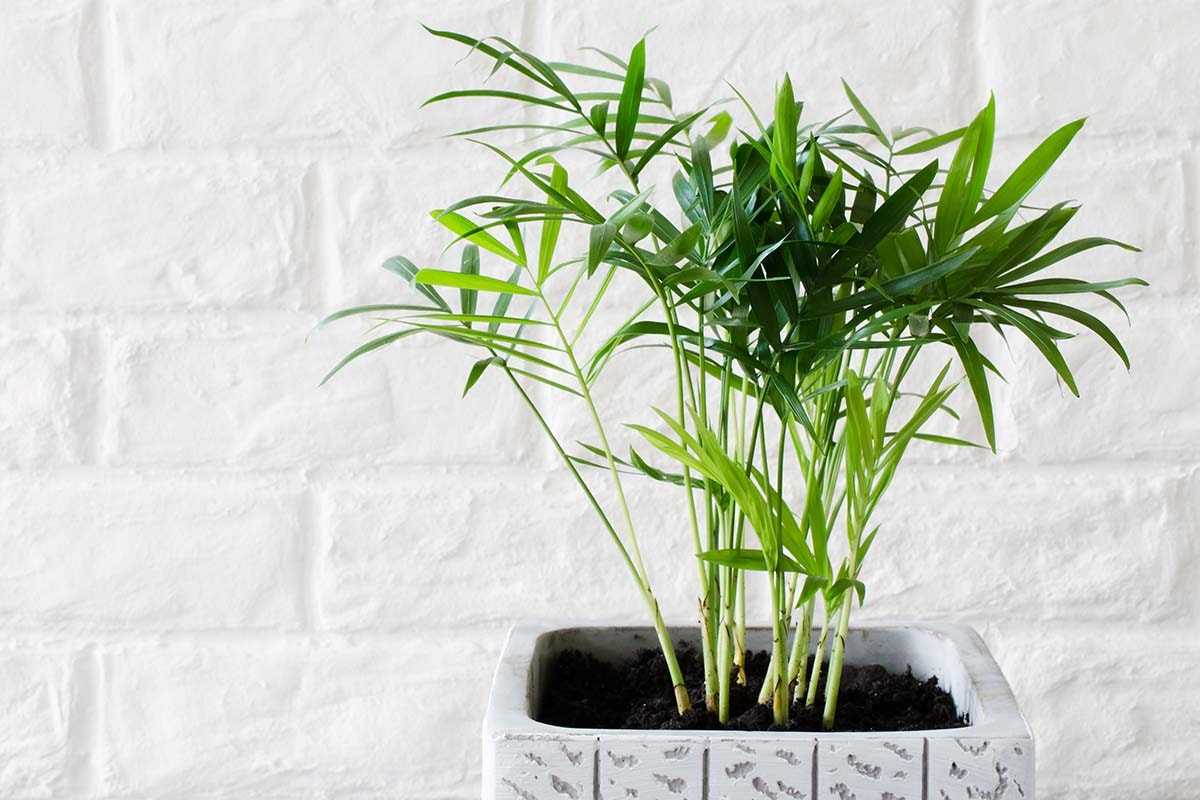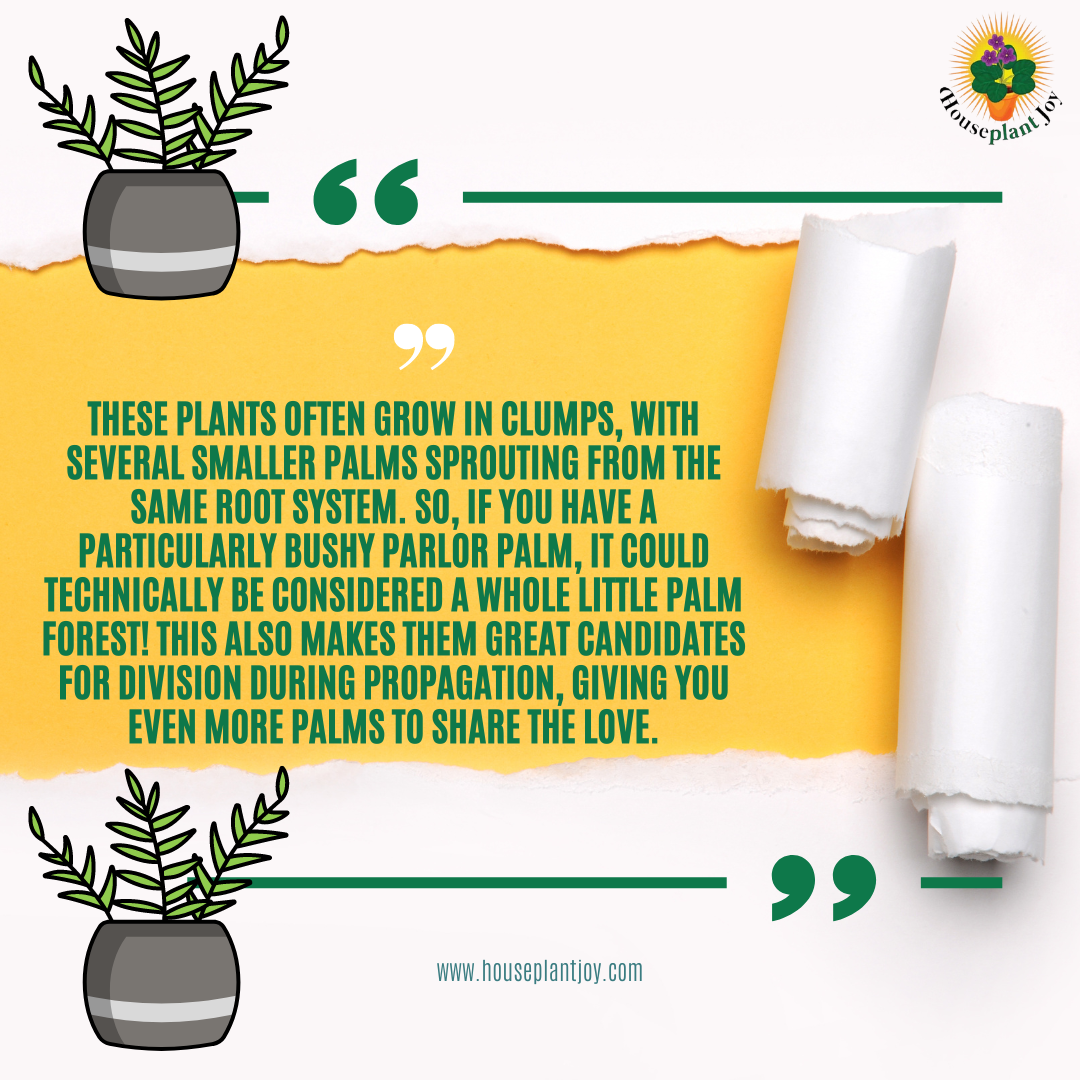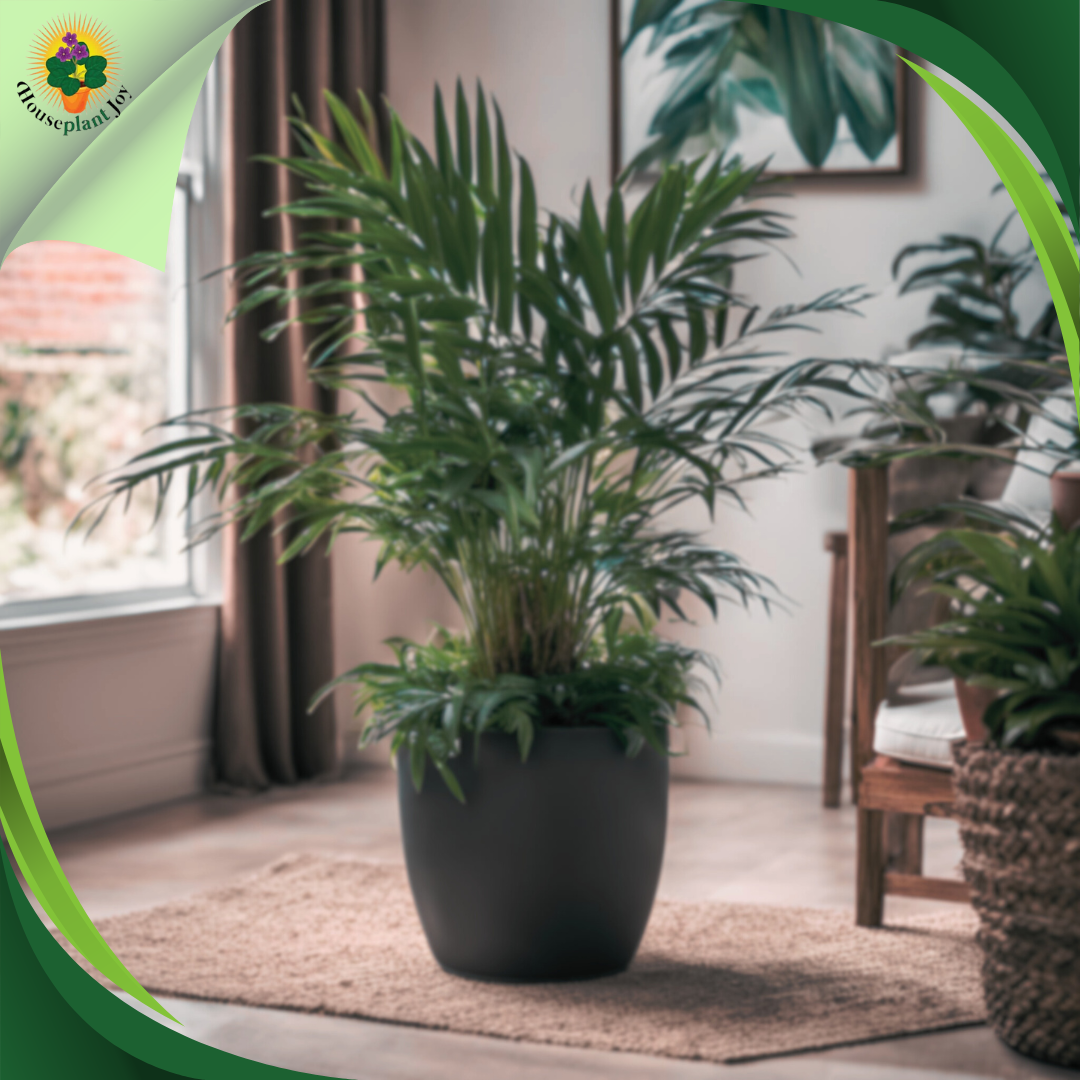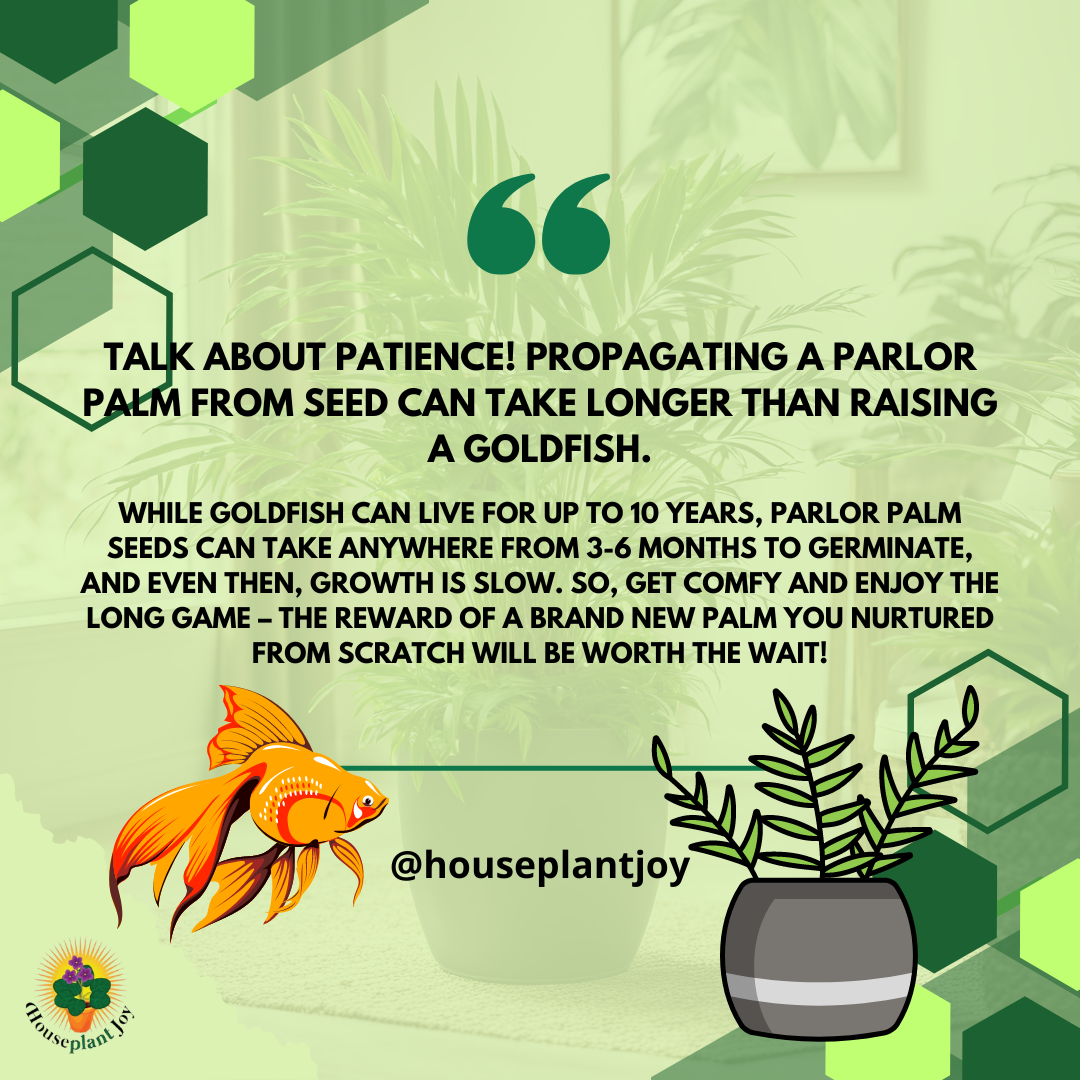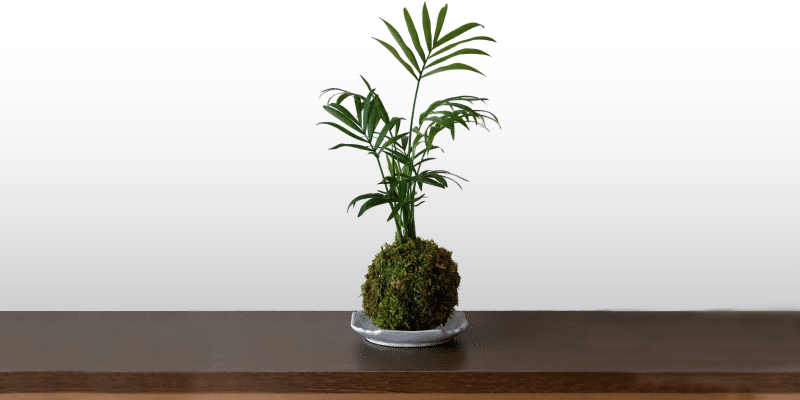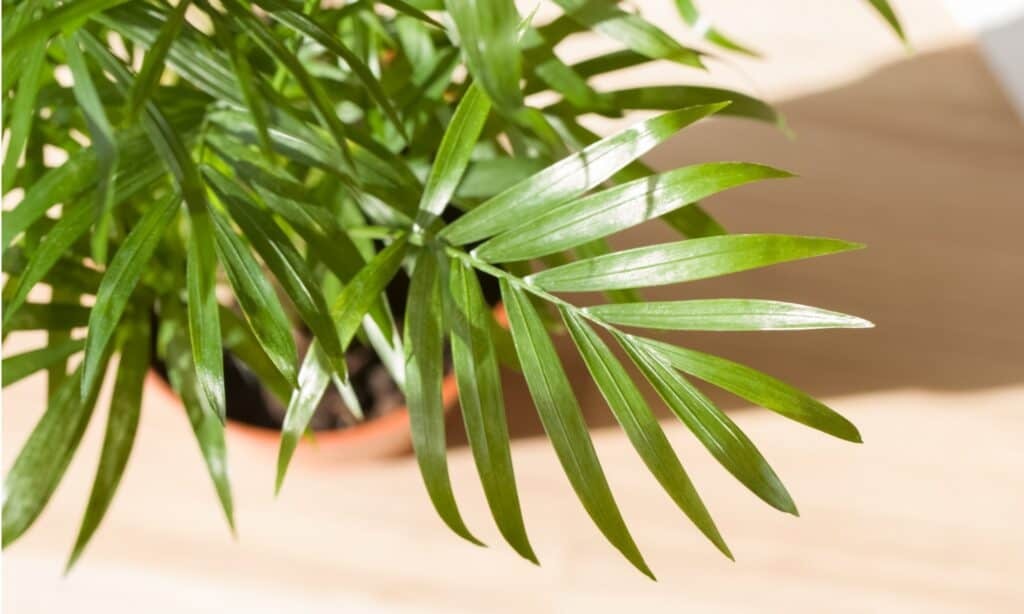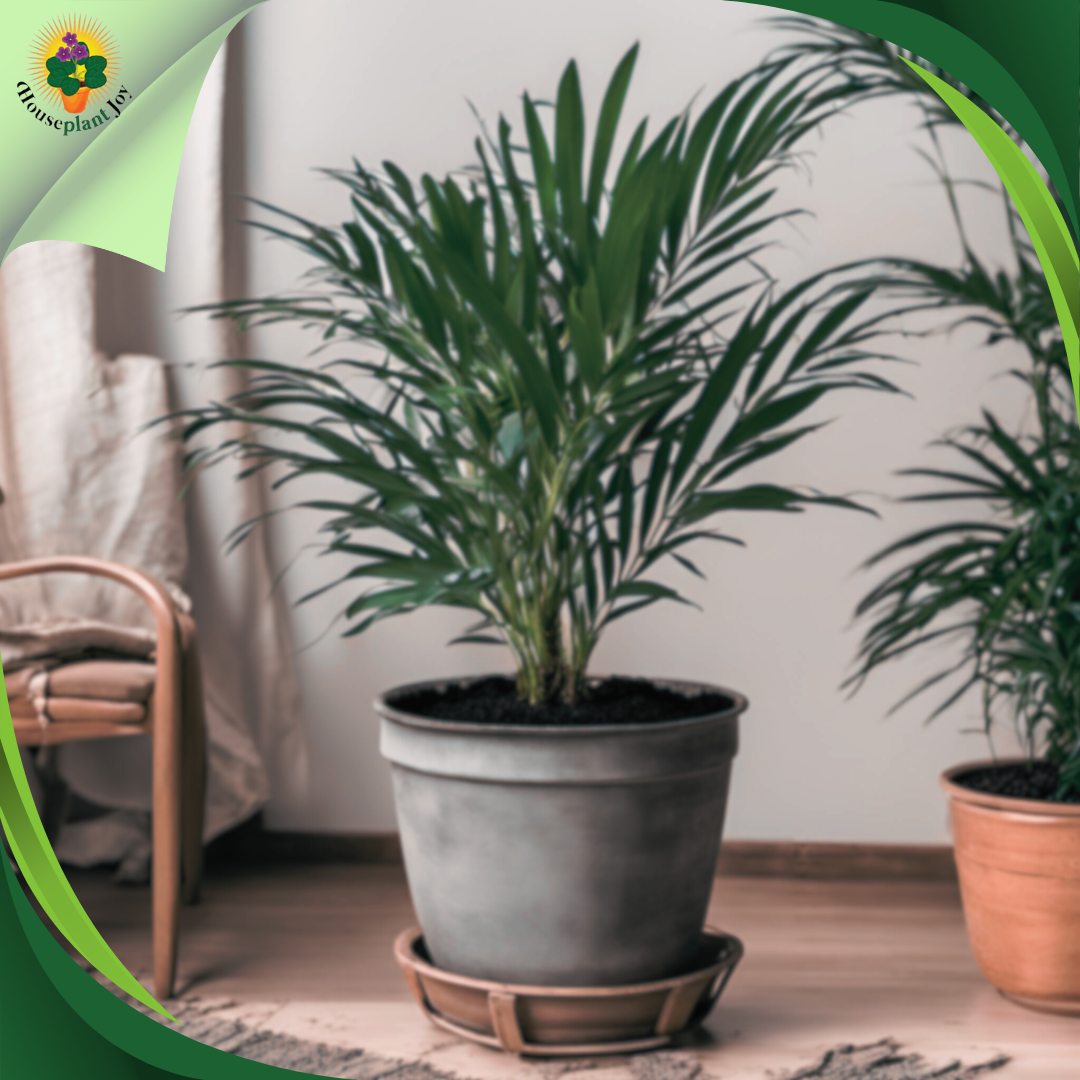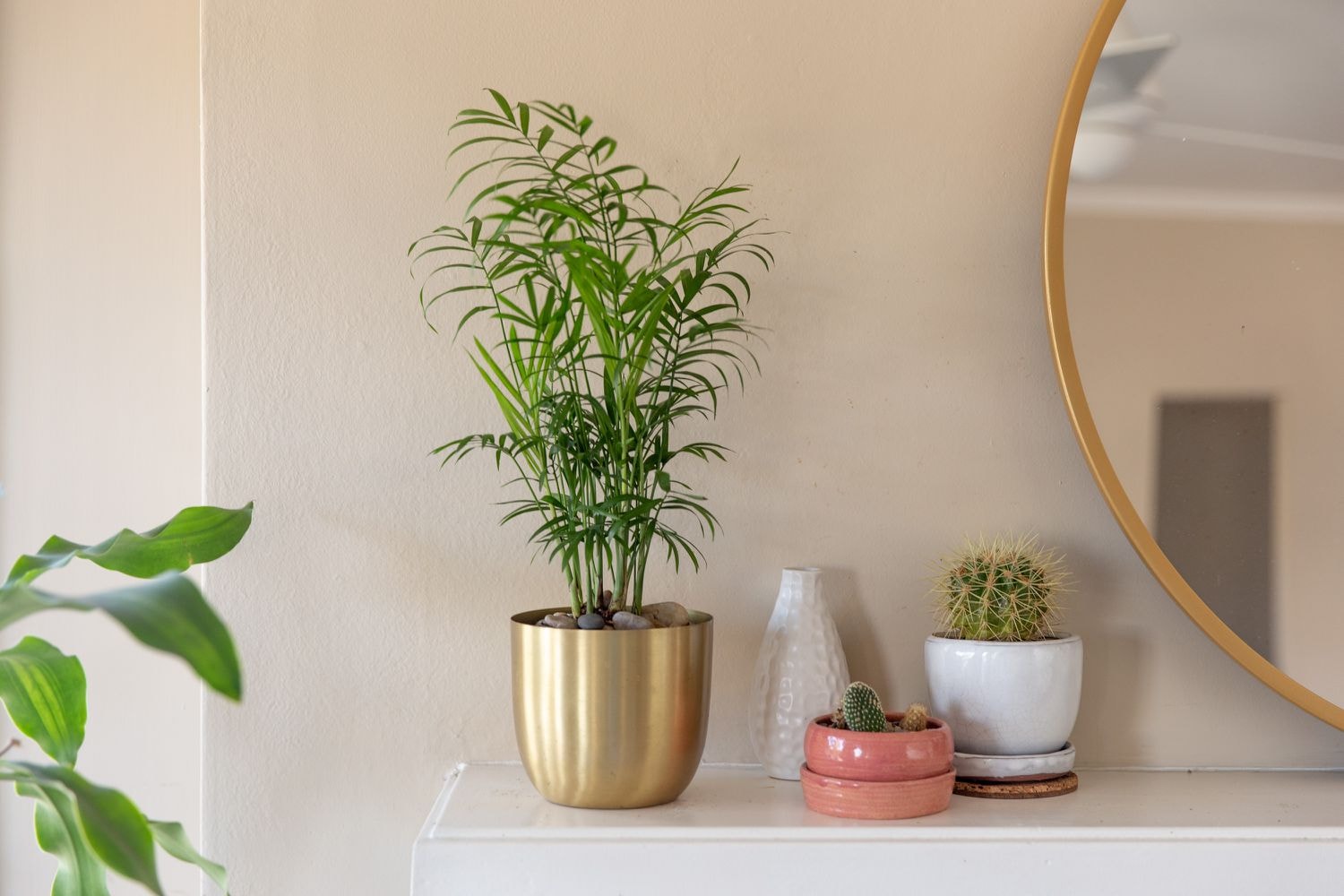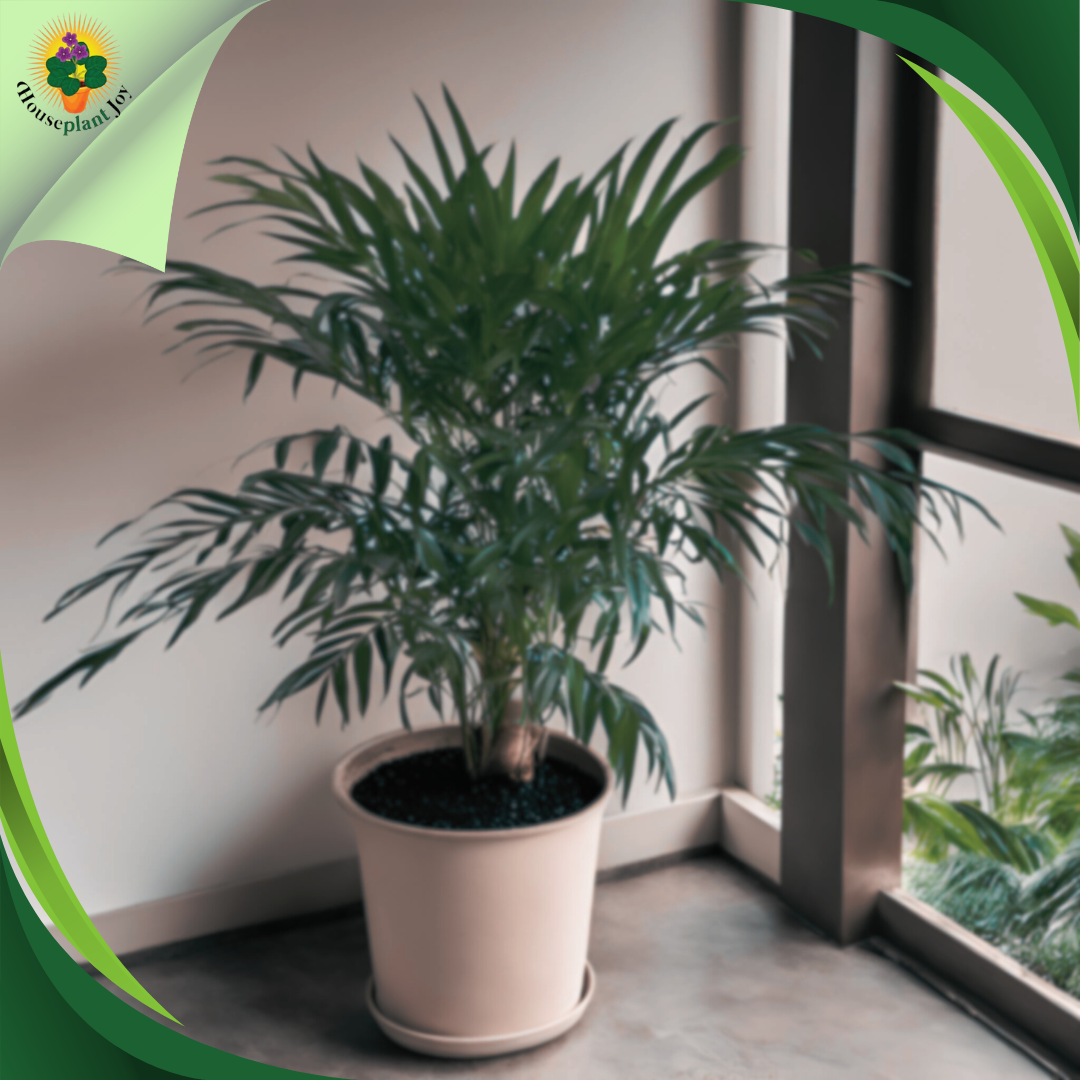HousePlantJoy is supported by our audience. When you purchase through one of our links, we may earn a small affiliate commission. As an Amazon Associate I earn from qualifying purchases. Your cost is not affected.
==================
Welcome to the captivating world of parlor palm propagation! In this guide, we’ll unlock the secrets to multiplying your green beauties, turning your indoor space into a personal jungle oasis. Have you ever marveled at a parlor palm’s lush, verdant charm and wondered if you could grow your own? Imagine transforming a single leaf into a thriving, elegant houseplant that brings a touch of the tropics into your home. Whether you’re a seasoned plant enthusiast or a budding green thumb, join us as we explore the step-by-step process of propagating parlor palms, ensuring your success in creating a stunning, leafy paradise.
Parlor Palm Propagation: Easy Tips for Green Thumbs
Parlor Palm Propagation can be a rewarding experience for any plant enthusiast. With proper techniques, anyone can cultivate new plants and introduce a vibrant green accent to their home. Follow a straightforward process to transform seeds into flourishing parlor palms, even if you’re a beginner in plant propagation.
It’s essential to obtain viable seeds and prepare them correctly for planting. Placing the seeds in a warm, humid environment will increase their chances of sprouting. By following best practices, such as using well-draining soil and maintaining optimal temperatures, you can help ensure success. Pay close attention to the needs of your growing parlor palm.
Consistent care, like watering appropriately and keeping the soil at the right moisture level, will help your new plants thrive. I have found joy in watching these beautiful palms grow, and I’m excited to guide you through the process.
Key Takeaways
- Propagating parlor palms at home offers numerous benefits. Controlling the growth environment, including soil quality and humidity levels, ensures optimal conditions for robust plant development.
- Successful parlor palm propagation begins with selecting healthy parent plants and gathering necessary supplies. This preparation enhances the efficiency and effectiveness of the propagation process.
- Parlor palm propagation can be achieved through three primary methods: seeds, division, and offsets. Each method presents advantages and challenges, allowing you to choose based on your preferences and available resources.
- Three effective methods for parlor palm propagation include sowing seeds, dividing the root ball, and separating offsets. Each method is tailored to specific needs and provides clear steps for successful propagation.
Propagation Basics
To propagate parlor palms, you usually start with seeds. Ensure you purchase viable seeds from a reputable source, such as a nursery specializing in houseplants. Once you have the seeds, plant them in well-draining potting soil. Make sure the soil stays damp, but not soaking wet.
Another method is to use a seed germination pouch. Dampen the growing medium, add the seeds, and seal it in a plastic bag. Place it in a warm spot near a radiator to encourage germination.
Benefits of Propagating Parlor Palms
Parlor Palm Propagation at home has multiple benefits. First, you can control the growth environment, ensuring healthy development. Each step supports stronger plants, from selecting quality soil to maintaining optimal humidity.
Additionally, home propagation is cost-effective. It eliminates the need to purchase mature plants, and you can grow multiple palms from a single batch of seeds. Seeing your efforts become lush green houseplants also provides a sense of accomplishment.
Finally, propagating your plants can enhance your home’s décor. You can distribute parlor palms throughout rooms, creating a cohesive, natural aesthetic.
Choosing Healthy Parent Plants
The first step is selecting vibrant and disease-free parent plants. Look for parlor palms with bright green leaves and no signs of yellowing or browning. Avoid plants that have pests or damaged foliage.
Healthy roots are another key factor. Gently check the roots by loosening the soil at the base. The plant may be unhealthy and unsuitable for propagation if the roots are mushy or dark brown.
Lastly, select a mature plant. Younger plants might still need to fully develop root systems, making them less ideal for division or cuttings. Choosing healthy and mature plants provides a stronger foundation for new growth.
Gathering Necessary Supplies
Having the right tools and materials on hand saves time and ensures successful propagation. You’ll need a few basic items:
- Clean Pots or Containers: These should have drainage holes to prevent waterlogging.
- Well-draining Potting Mix: A mix that’s light and airy works best for parlor palms.
- Sharp, Clean Tools: To avoid transferring diseases, scissors or knives for cutting roots or stems should be sterilized.
- Water Spray Bottle: To maintain soil moisture without excessive watering.
Also, consider using a humidity dome or plastic bag to maintain moisture levels, especially if your home is dry.
Seed Propagation
Propagating parlor palms from seeds is fun but requires patience. First, get fresh seeds, ideally from a reputable nursery. After acquiring the seeds:
Fill a small pot with well-draining potting soil, then place two or three seeds on the soil surface, lightly covering them with a thin layer of soil. Gently water the soil to maintain moisture without saturating it, using a spray bottle to dampen the growing medium evenly.
Then, place the pot in a warm location, such as on a heat mat or near a radiator. Germination may take several weeks, requiring patience and consistent maintenance of soil moisture. You’ll start seeing sprouts over time. Once the seedlings are big enough to handle, they can be transplanted to larger pots.
Division Propagation
The division is an excellent way to propagate parlor palms if you have an established plant. First, carefully remove the plant from its pot. Look for clumps with their roots and stems. Gently separate these clumps, ensuring each division has a decent root system. Once you have your divisions, plant them in separate pots filled with fresh, well-draining soil.
Water them thoroughly, but avoid waterlogging. Place the pots in a location with medium to low light and keep them at a consistent temperature, avoiding extreme cold or heat. The divided plants may take some time to acclimate to their new pots. However, with proper care, they will eventually thrive and grow into beautiful, individual palms.
Offset Propagation
Propagating parlor palms using offsets is a straightforward method. Look for small offshoots growing at the base of the parent plant. These offsets have their root systems and can be separated from the main plant for propagation. Carefully dig around the base of the plant to locate the offsets.
Cut the offsets away from the parent plant with clean, sharp scissors or a knife. Plant these offsets in small pots with well-draining soil and water them gently. Place the pots in a warm and moist environment to promote growth.
Over time, the offsets will develop into independent plants. Be mindful of overwatering and poor lighting conditions to ensure the offsets grow healthily.
Sowing Seeds
To start propagating Parlor Palms from seeds, the first step is to obtain viable seeds from a reputable nursery. Once you’ve got the seeds, grab a small pot and fill it with potting soil that drains well. Sprinkle two or three seeds on top of the soil. Then, gently cover them with a thin layer of soil. Easy as that! Then, gently water the soil to keep it moist, using a spray bottle to prevent overwatering. To maintain humidity, cover the pot with plastic wrap.
Place the pot in a warm location near a radiator or a heat mat. Parlor Palm seeds need a warm environment for germination. Check regularly to ensure the soil stays moist. Germination can take several weeks. Once seedlings appear, remove the plastic cover. Continue to water them regularly and keep them in a warm, well-lit place.
Dividing the Root Ball
Dividing the root ball of a mature Parlor Palm is another effective propagation method. Begin by delicately extracting the plant from its container. Shake off any surplus soil clinging to the roots. Examine the root ball closely, identifying natural points where division is feasible. Employ a sterile, sharp knife to segment the root ball into sections, ensuring each segment boasts multiple stems and robust root systems.
Prepare new pots with well-draining potting soil for each section. Plant each division in its own pot, making sure to cover the roots well with soil. Water the divisions thoroughly and place them in a location with medium light.
Separating Offsets
Separating offsets, known as “pups,” from the mother plant is a simple method for propagating Parlor Palms. Begin by identifying the offsets growing at the base of the plant. Once the entire plant is gently removed from its pot, access the offsets and carefully detach them from the main root ball. Sometimes, using a clean knife may be necessary to cut through connecting roots.
Each offset should have its roots. Plant the offsets in small pots containing soil that drains well. Make sure to give them a good watering right after planting to help them settle in nicely. Place the new plants in a spot with moderate light and maintain regular watering. Avoid direct sunlight at first to prevent stress on the young plants.
Ideal Growing Conditions
Parlor palms prefer a location with medium light levels but can adapt to low light. I place mine near a north-facing window.
Keep your indoor temperature consistently between 65°F and 75°F for optimal growth; cooler temperatures can slow down growth. Parlor palms thrive in higher humidity, so consider using a humidity tray or a room humidifier to maintain moisture levels. Use a well-draining potting mix, such as a blend of peat moss and perlite, to prevent root rot and promote healthy root development.
Watering and Feeding
Proper watering is crucial. I water my parlor palm when the top inch of soil is dry to the touch. When watering, I make sure to thoroughly saturate the soil until water drains out from the bottom of the pot. It’s important not to let the pot sit in water, as this can lead to root rot.
During the growing season, I feed my palm with a balanced, water-soluble fertilizer every month. I reduce feeding to every 2-3 months in the fall and winter. If the leaves turn yellow, it’s usually a sign of overwatering. Brown leaf tips can indicate low humidity or too much fertilizer.
Potting and Repotting
Young parlor palms grow slowly and don’t need frequent repotting. I repot mine every 2-3 years or when I notice the roots filling the pot. Choose a pot that’s a bit bigger than the one it’s currently in.
When repotting, I gently remove the plant from its pot and shake off any old soil. I trim any damaged roots and place the plant in fresh potting mix.
After repotting, water the palm lightly and avoid fertilizing for a month to let it acclimate. This routine helps ensure that my parlor palm continues to grow healthily.
Green Success: Mastering Parlor Palm Propagation for a Lush Indoor Oasis
In mastering parlor palm propagation, you’ve embarked on a journey that enriches your living space with lush greenery and fosters a deeper connection to nurturing plant life. By understanding the basics of seed sowing, division, and offset propagation, you’ve effectively equipped yourself with versatile techniques to propagate these graceful houseplants.
Beyond the practical benefits of controlling growth conditions and saving costs, propagating parlor palms offers a sense of accomplishment as you witness your efforts flourish into vibrant, thriving plants. Whether you’re adorning your home with its natural elegance or cultivating a green sanctuary, the journey of parlor palm propagation is both rewarding and accessible to all gardening enthusiasts.
As you care for your new parlor palms, remember to maintain ideal growing conditions, provide consistent watering and nutrition, and periodically repot to support their ongoing health and growth. With these practices, your parlor palms will continue to grace your home with their beauty, enhancing your indoor environment and gardening expertise. Happy propagating!
What is the Proper Method to Propagate a Parlor Palm From a Leaf?
What Are the Steps for Propagating a Parlor Palm From Its Stem?
How Do I Grow a Parlor Palm From Seeds?
Why Should You Join Us?
Get insider secrets: Unearth the best-kept tips to keep your plants thriving and blooming like never before.
Expert Advice: Gain access to our team on Facebook, Twitter, and other social media channels, and meet our gardening experts eager to help you on your plant journey.
Engage With Like-Minded Souls: Connect with fellow plant lovers, exchange stories, and build a supportive community. Join us today! Follow Houseplant Joy on Facebook, Instagram, and Twitter for daily inspiration and a blooming good time! #HouseplantJoy #GreenThumbsUnite #HouseplantLove


